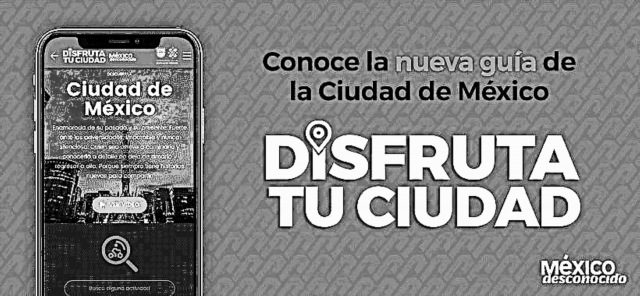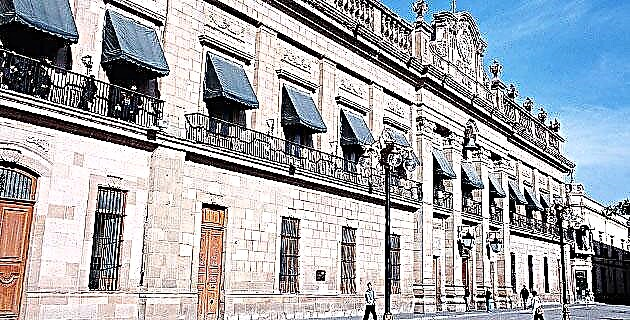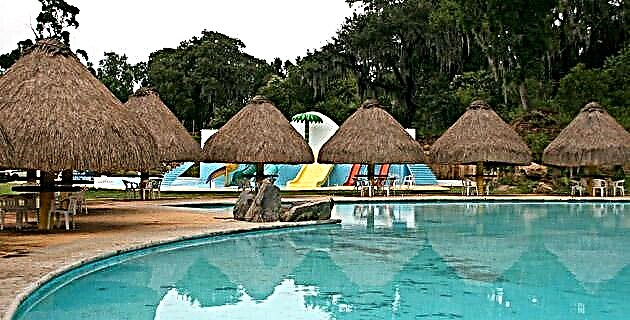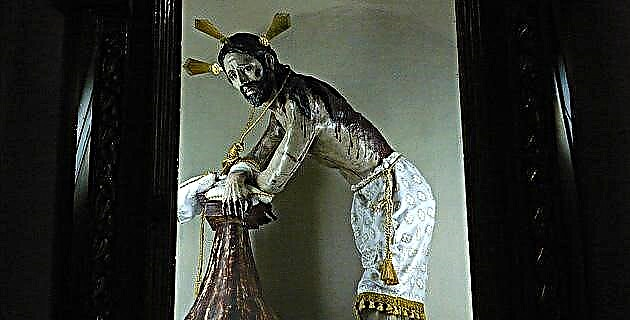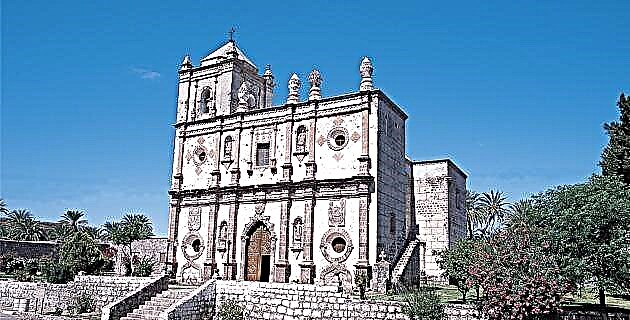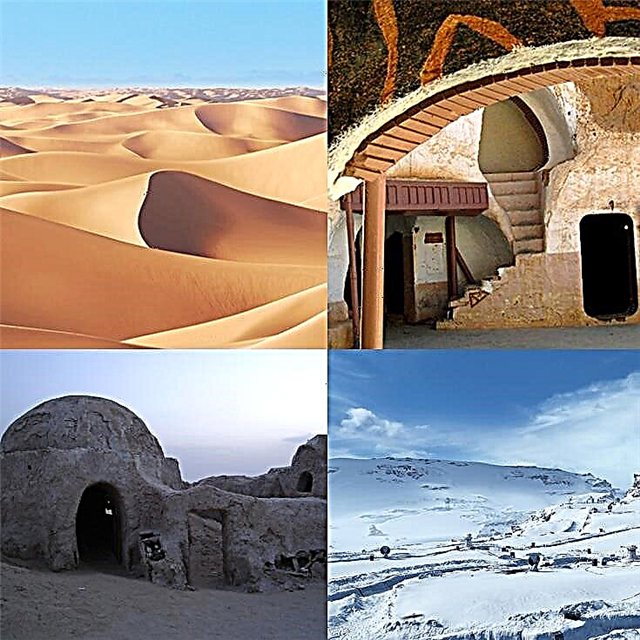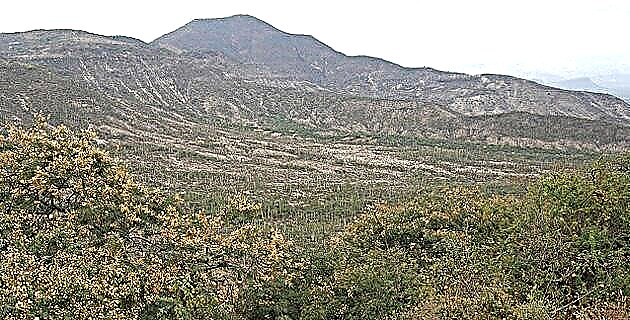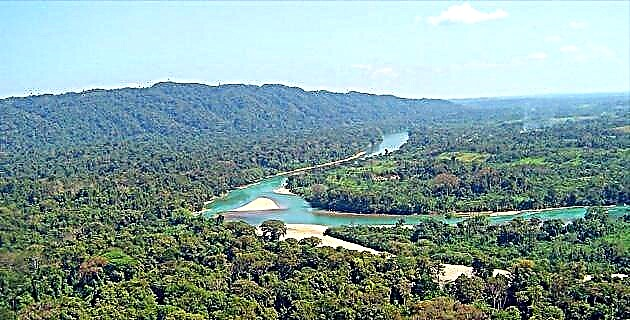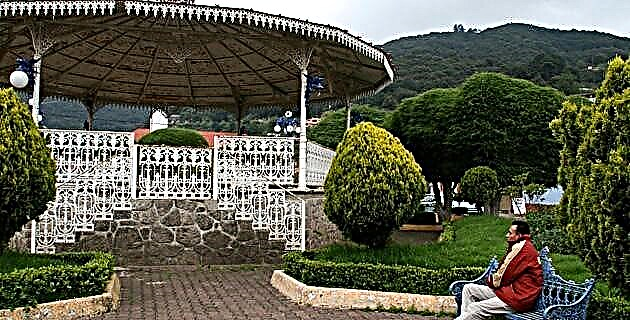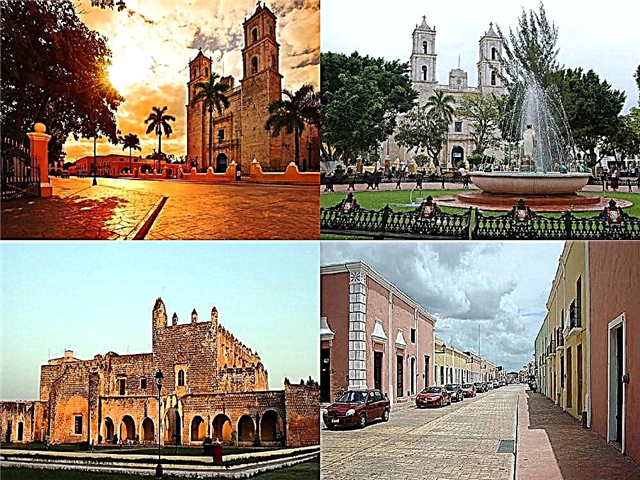The colonial Yucatecan city of Valladolid has splendid architecture, beautiful cenotes, archaeological sites, ecological parks and much more. Get to know it with us through this complete guide to this Magic Town.
1. Where is Valladolid located?
Valladolid is a Yucatecan city with a dazzling colonial appearance. It is called La Sultana de Oriente and is located in the northern sector of the peninsula, about 100 kilometers from the Caribbean Sea. Valladolid has about 50,000 inhabitants, being the most populated city in eastern Yucatán and the third in the state after Mérida and Kanasín. The nearest major cities are Cancun, which is 158 km away, Merida, which is 162 km away. and Kanasín, 156 km. The ancient Mayan city of Chichén Itzá is located just 50 km away. of the Magic Town.
2. How did the city come about?
Valladolid was founded on May 28, 1543 by the conqueror Francisco de Montejo, the Nephew, who personally drew the plan of the town and named it to honor the Castilian city of the same name. In 1833 the first thread and fabric factory to use steam as a driving force in Mexico was installed in Valladolid and in 1848 it fell into the hands of the indigenous people in the middle of the Caste War. In 1910, Valladolid was the scene of the precursor movement of the Mexican Revolution.
3. What weather awaits me in Valladolid?
Valladolid has a warm tropical climate, with a rainy period that lasts from May to October. With an altitude of just 24 meters above sea level, the average annual temperature in the city is 25.3 ° C. Spring, summer and autumn are hot, with the thermometer reading between 25 and 27 ° C, with peaks above 30 ° C; while in winter it cools down to 22 or 23 ° C between December and February. During the cold period, the thermometer never drops below 15 ° C. So your suitcase to go to Valladolid must be lightly dressed.
4. What are the main attractions of Valladolid?
Valladolid is a colonial city that stands out for its civil and religious architecture. Among the Christian buildings, the Church of San Servacio, the Temple and former convent of San Bernandino de Siena, the Church of Santa Lucía, the Temple of La Candelaria and the Church of San Juan stand out. The most distinguished buildings and civil spaces are the Main Square, the House of the Deer, the Municipal Palace, the Calzada de los Frailes, the San Roque Museum, the Cantón House and the Heroes Park. Other sites of archaeological and tourist interest are the Mayan site of Ek Balam, the nearby cenotes, the Ría Lagartos Biosphere Reserve, the beach town of El Cuyo and some old farms.
5. What is the Main Square like?
The Valladolid zócalo or Francisco Cantón Main Park, is a wide wooded space, with blacksmith benches and pleasant passages, built in the place where a Mayan pyramid was located. The square was designed in the mid-sixteenth century during the founding of the town and has a beautiful Spanish railing, with protected gardening and a central fountain with a monument dedicated to the Valladolid mestizo. La Mestiza was sculpted in 1924 by the artist Manuel Cachón Cimá and wears a Yucatecan suit, the typical regional costume of three pieces: fustán, hipil and doublet.
6. What is the interest of the Church of San Servacio?
The architectural tradition of the Catholic Church establishes that the entrance of the churches must face the west. This Valladolid temple located in front of the Main Square has its current entrance to the north, due to a dramatic historical event. On the night of July 15, 1703, Fernando Hipólito de Osorno and Pedro Gabriel Covarrubias were assassinated inside the temple by order of the mayors Ruiz de Ayuso and Fernando Tovar. The event went down in history with the name of "Crime of the Mayors", and the church was remodeled as redress, changing its entrance. However, the portico of the original facade was preserved, with the images of the Apostles Peter and Paul.
7. What can I see in the Temple and former convent of San Bernardino de Siena?
This religious complex located in the Sisal neighborhood is considered the main architectural symbol of the colonial city. It was built in 1552 under the direction of the architect and Franciscan friar Juan de Mérida. The temple was erected for religious and defense purposes, with walls up to 3 meters thick, which make it a medieval Franciscan-style fortress. The conventual façade has a doorway with semicircular arches, with two chapels on the sides. Inside, the main altarpiece, several sculptures in niches and the remains of some original frescoes stand out.
8. What is the House of Deer?
This immense 1700-square-meter house-museum is owned by John and Dorianne Venator, an American couple who, after buying it, took 10 years to renovate and refurbish it, to display more than 3,000 pieces of Mexican folk art, the largest collection in the country in private hands. It operates in an old colonial house in the historic center, next to the Municipal Palace, and opens its doors daily from 10 AM, charging a modest fee to finance charities. The Casa de los Venados is also the scene of concerts and special events.
9. What stands out in the Temple of Santa Lucia?
The Valladolid neighborhood of Santa Lucía venerates in its church the Sicilian martyr who is the patron saint of sight and the blind. The Church of Santa Lucia was built in the early 17th century and is located in front of a cozy park that is frequented by locals for its quiet and family atmosphere. In the sober temple the height of its vaulted ceiling is distinguished and the façade is crowned by a simple belfry, with three clearings for the bells. The door frames have carved ornamentation with plant motifs.
10. What is the Municipal Palace like?
It is a two-story building erected in the fourteenth century and remodeled in the nineteenth, built in the image and likeness of the Royal House of Santo Domingo, Dominican Republic. The mustard-colored building has a long arcade of semicircular arches supported by stone columns. The central balcony has a double Tuscan colonnade, with the opening crowned by a dust cover. On the upper floor are exhibited the oil paintings of the revolutionaries shot on the occasion of the First Revolutionary Spark in June 1910. In one of the corridors of the building the shield of the city is carved.
11. What is distinguished in the Temple of Candelaria?
The invocation of the Virgin Mary that originated in Tenerife, Spain, is celebrated in the Barrio de la Candelaria in a church located at the crossroads of streets 35 and 44. It is a set with a predominance of red and white colors, consisting of the temple, a dressing room located above the sacristy and a portal supported by Moorish arches that reaches the street. Inside the carved noble wood pulpit, the vaulted ceiling, the altarpiece with plant motifs and various images of saints in their niches are distinguished.
12. What is the interest of the Calzada de los Frailes?

It is one of the most beautiful and picturesque streets of Valladolid, with its houses with colonial facades of harmonious colors edged with white, flanking the cobbled pavement. The street was built in the 16th century to connect the center of the city with the Sisal neighborhood, particularly with the temple and former convent of San Bernardino de Siena, located in said neighborhood. Walking this street on foot, from one end to the other, is to go back to the time when the patrons circulated in horse-drawn carriages, despite the cars that the current owners park in front of their houses.
13. What is the Church of San Juan like?
This temple of slender twin towers topped by quadrangular pyramidal pylons, is located on Calle 40, in front of San Juan Park. The main façade has a semicircular arch with a quarry stone frame, the coral window and 3 small circular windows also with stonework frames and as a finish a balustrade that connects the two towers. Inside there is a Solomonic style altarpiece decorated with plant motifs, the baptismal font and some niches with images.
14. What can I see in the San Roque Museum?
This building located on Calle 40, one block from the cathedral, was in the 16th century a religious complex made up of a cloister and a church, later becoming the first hospital in the city. In the 1980s the building was restored and enabled as a museum of regional history, particularly Yucatecan and Valladolid. The main archaeological piece in the sample is a carved stone serpent head brought from the Ek Balam archaeological site, also including handicrafts and documents. It opens its doors between 8 AM and 8 PM and admission is free.
15. What is the history of Casa Cantón?
This house in the historic center of Valladolid is one of the oldest in the city. At the beginning of the 19th century, it was the residence of Don Roque Rosado, who at the time served as Procurator of the town. In the 1830s, the house became the property of Pedro Sainz de Baranda y Borreiro, a Mexican patriot who participated in the famous Naval Battle of Trafalgar as a subject of Spain and later defeated the Spanish in Veracruz during the Mexican War of Independence. In 1863, the house passed into the hands of General Francisco Cantón Rosado, and his nephew, Delio Moreno Cantón, a notable liberal, writer and journalist from Valladolid was born there.
16. What's in the Heroes Park?
This beautiful wooded park, with green areas and rose bushes, is linked to several characters who starred in historical events of the city. There are the mortal remains of Fernando Hipólito de Osorno and Pedro Gabriel Covarrubias, the officials murdered on the night of July 15, 1703 inside the temple of San Servacio in the episode known as the "Crime of the Mayors". In the Parque de los Héroes Claudio Alcocer, Atilano Albertos, Máximo Bonilla and José Kantún, the Valladolid revolutionaries who started the Mexican Revolution in the city, were shot.
17. What is the interest of the Archaeological Zone of Ek Balam?
This Mayan archaeological site is 30 km away. from Valladolid and is one of the most relevant of the late classical period. Among its main buildings are the Acropolis, the Oval Palace, the Twin Pyramids and the ball court. The Acropolis has a floor plan of 146 by 55 meters and a height of 29 meters, being the most important structure. Its more than 2,000-year-old plaster frieze is remarkably well preserved, with an open-jawed door, the fangs of a monster, and a sovereign on his throne standing out in the decorations. The wall paintings are highly realistic.
18. What are the main cenotes?
According to Mayan mythology, at the bottom of the beautiful Cenote Zací live the souls of Hul-Kin and Zac-Nicte, a couple in love; However, people bathe in its crystalline and refreshing waters without any setback. This cenote was for a long time Valladolid's source of water. Cenote XKekén is 2 km away. from the city and is also known as the Blue Cave, since it is located in an underground cavern through whose vault the sun's rays enter. The sun's rays create a beautiful luminous effect in the turquoise blue waters.
19. Where is the Ría Lagartos Biosphere Reserve located?
106 km. North of Valladolid is the Ría Lagartos Biosphere Reserve, an ecotourism paradise facing the Caribbean Sea, home to 340 species of birds, 50 of mammals and 95 of reptiles. This semi-enclosed body of water is the natural habitat of the beautiful Mexican pink flamingo and a visit to the estuary will allow you to admire hundreds of thousands of these birds, which dress the landscape in pink. In 1986 this reserve became the first in Mexico to obtain the category of Ramsar Site, which includes the most important wetlands for biodiversity in the world.
20. What can I do in El Cuyo?
Within the Ría Lagartos Biosphere Reserve is the fishing village of El Cuyo, a picturesque town full of coconut trees, palm trees and ceibos. El Cuyo beach is of fine sand and is the ideal place to practice your favorite sea entertainment. At the pier you can board a speedboat to go to Holbox Island, on a journey that is an adventure of an hour and a half. Another of El Cuyo's attractions are its spectacular sunrises and sunsets. In the evenings, the most romantic visitors often make bonfires to see the starry sky and enjoy the fresh air in pleasant company.
21. What are the main farms?
In the outskirts of Valladolid there are some old Yucatecan farms that have been equipped as excellent ecotourism parks for the enjoyment of different entertainment. Hacienda La Guadalupana is a 7-hectare space where you can go hiking, mountain biking, horseback riding and kayaking, sport fishing and extreme sports. The park has a spacious and elegant restaurant for 300 people. Hacienda San Miguel was founded in the 16th century and now has equipped cabins, palapas with hammocks and places for outdoor entertainment.
22. What is the local crafts like?
Valladolid artisans make beautiful embroidered huipiles and other pieces, such as the typical Yucatecan guayabera. They also work in stone and wood carving, jewelry, saddlery, and natural fiber basketry. In front of the Francisco Cantón Main Park is the Zací Regional Handicraft Center, where you will find a wide variety of pieces, so that you can take an authentic souvenir of the Magic Town. All the houses in Valladolid have an old history. The Zací Regional Crafts Center was originally Casa Cural and later Model School, Chair of Military Exercises and private residence.
23. What are the favorite foods of Valladolid?
The people of Valladolid are great eaters of beans with pork, chicken stew and venison pipián. They also enthusiastically sink their teeth into salbutes, panuchos and papadzules, not forgetting the stuffed cheeses and the cochinita pibil, which they prepare in earth ovens known since pre-Hispanic times. The symbolic drink is xtabentún, a Mayan liquor prepared with the flower of xtabentún, a plant similar to anise, and honey from bees. Nor have they forgotten the balché, a Mayan drink prepared with a fermented legume. If you prefer something milder, you can order an horchata. Among the desserts, the sweet cassava with honey, the cocoyol in syrup and the honey pumpkin stand out.
24. What are the main festivals?
Each Valladolid neighborhood has its festivities in honor of its patron saint or eponymous. Among the liveliest is the Feria de la Candelaria, in the neighborhood of the same name, a festival that is celebrated in the days before and after February 2, the day of the Virgen de la Candelaria. The feast of San Servacio is in October, with the temple in the historic center as the main setting. Between June 3 and 4, the First Spark of the Revolution is celebrated, with a simulation that commemorates the taking of the main square by the revolutionary forces. The Cultural Autumn is between October and November, with artistic and cultural events in the main park, the House of Culture and other settings.
25. Where can I stay?
Casa Marlene, on Calle 39, N ° 193 in the center of Valladolid, is a small hotel with first class service according to its users and an exquisite breakfast. On Calle 40 in front of Parque San Juan is the Hotel Posada San Juan; It works in a beautiful colonial-style building and its clients rate it as impeccable. The Candelaria Hostel is located on Calle 35 in front of the park of the same name and is distinguished by a simple but clean environment, and its low rates. Other options are Zentik Botique Hotel, Casa Tía Macha, El Mesón del Marqués and Hotel Quinta Marciala.
26. What are the best restaurants?
Yerbabuena del Sisal is a nice restaurant with a terrace located opposite the former San Bernardino de Siena convent, serving Mexican and international food prepared with organic ingredients. El Mesón del Marqués is the hotel restaurant of the same name and has in its menu some dishes of the typical Yucatecan cuisine, such as the panuchos de cochinita pibil. If you fancy tacking with freshly made tortillas, you must go to MAQtacos, which also offers Spanish and Mexican food. El Atrio del Mayab is specialized in Yucatecan food.
We hope that your visit to Valladolid meets all your expectations and that this guide will be very useful to you in the Yucatecan Magic Town. We say goodbye until a next walk through the incomparable Mexican geography.

